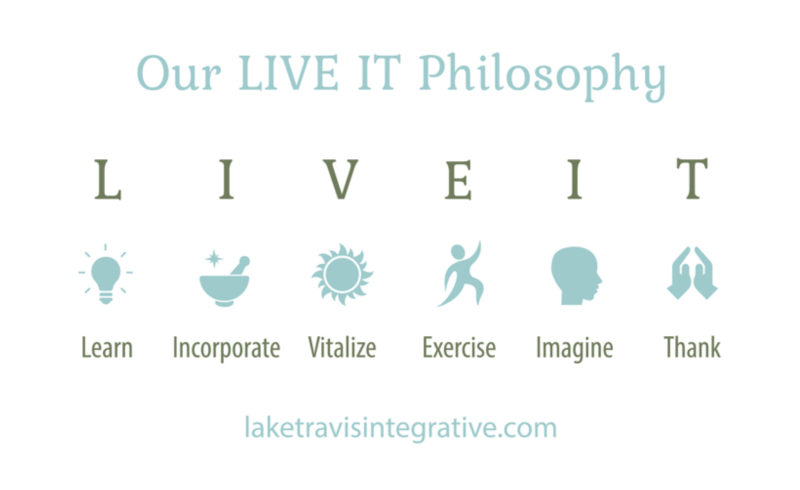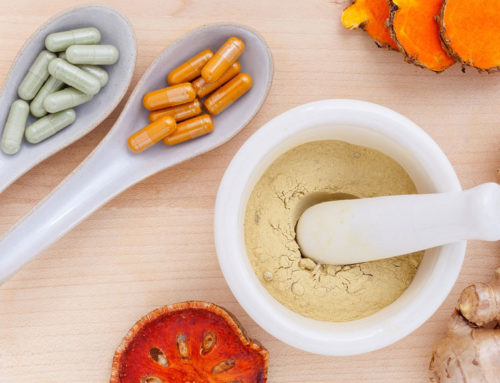One of the key principles in my LIVE IT Philosophy, is L for LEARN. The acronym LIVE IT – standing for Learn, Incorporate, Vitalize, Exercise, Imagine, Thank – represents my belief that being healthy shouldn’t be complicated, but rather supported every day by adopting a lifestyle that supports wellness.

One important concept I have learned and share with my patients is adopting an anti-inflammatory lifestyle. Inflammation gets a bad rep, but in and of itself inflammation is a normal, healthy response of the body. However, when inflammation lingers too long, it can become problematic.
Inflammation is a cascade of cellular responses in the body intended to protect us from infection, illness or injury. Inflammation causes symptoms that include heat, pain, redness, swelling and in some cases-loss of function. If you fall and scrape your knee, you most likely will experience some or all of these symptoms. Over time, the body will naturally heal and repair the tissue. If the body is injured or infected, inflammation is it’s natural response and is necessary for the healing process. Inflammation is a good thing, but like most things, too much of it can be problematic. Chronic inflammation can result when the body is not able to turn off the inflammatory response.
As examples, allergies, diabetes, heart disease, arthritis , asthma, gum disease, chronic pain, cancer, brain fog, and in some cases depression can be side effects or causes of chronic inflammation.
Addressing chronic inflammation is an important piece of my practice. Optimizing cellular response in the cascade of inflammation can help ensure inflammation remains a friend and not a foe.
Some tips and tricks I discuss with my patients to keep inflammation in check include:
- Limiting Sugar: High sugar foods create an environment in your gut and blood stream that can suppress that body’s innate responses.
- Limiting high processed fat foods: Foods that have processed saturated, trans, and omega 3 fats confuse the immune system and create or extend the stay of an inflammatory response in the body.
- Identifying possible food allergies or sensitivities: Many foods that contain known common allergens, such as gluten and dairy containing foods- can sometimes confuse the immune system to identify them as pathogens. This cascade called molecular mimicry- can cause the immune system to attack and create unpleasant symptoms and increased inflammation.
- Eating plenty of fiber: Fiber deficiency can cause your GI tract to become underactive. Introducing fiber allows it to act like a broom to help sweep toxins and irritants out of the gut.
- Incorporating a variety of color on your plate: Fruits & Vegetables contain keep phytonutrients and antioxidants which help control inflammation.
- Exercise: Moving your body does so much including helping optimize your insulin sensitivity and limiting how much adipose tissue (fat) you have. Excess adipose tissue can hold onto toxins and initiate pro-inflammatory response.
- Optimizing Vitamin D levels: Low vitamin D levels have been shown to correlate with increased chronic inflammation. Adequate vitamin D levels aid your body to have a healthy inflammatory response.
- Limiting Toxin and Chemical exposure: Toxins and chemical exposure can cause prolonged inflammation, disrupting the body’s messengers (hormones) and more. Opting for less harsh cleaners, chemicals, and self care products in your home and educating yourself on the effects of these on your health is another important key to addressing inflammation.
- Healthy mind, Healthy body! Having an outlet to manage your stress and emotions cannot be emphasized enough. Seeking out supportive environments, relationships, and professional help when needed are important to managing your mental health. Take time in your day to include meditation, yoga, exercise, prayer or whatever works for you to reset and manage your stress.
Incorporating these anti inflammatory practices can ensure your body has the fuel, support, and environment it needs to thrive!







Leave A Comment